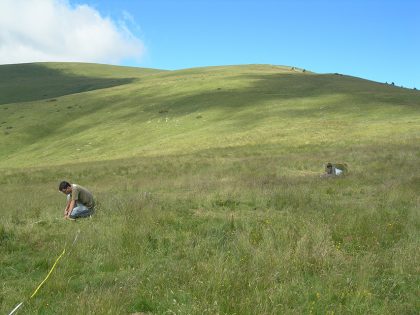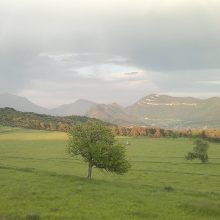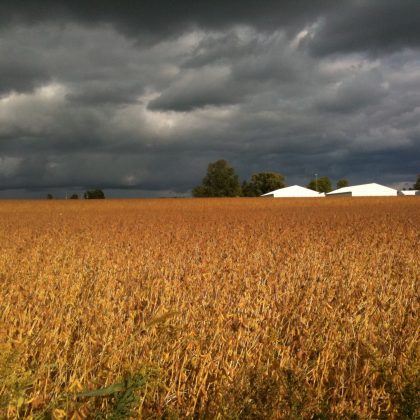Phenology and plant diversity drive CO2 exchange in grasslands
The article Phenology and plant functional type dominance drive CO2 exchange in seminatural grasslands in the Pyrenees is available free for a month in the Journal of Agricultural Science
Grasslands play a crucial role in climate change mitigation, since they are the most widespread terrestrial habitat in the world, storing an important amount of soil carbon. In addition, grasslands are often typified as biodiversity hotspots, being relevant in the field of conservation. However, due to their wide geographical distribution and varied environmental conditions, as well as the wide range of plant species they host, there is still uncertainty about how environmental conditions and vegetation interact to drive CO2 fluxes in these systems.

Thus, we aimed to unravel interactions between climate, vegetation and CO2 fluxes. To this end, we assessed the contribution of plant phenology and diversity as drivers of CO2 fluxes at the seasonal scale in two climatically contrasting grasslands (montane vs. subalpine, Figure 1) in the Pyrenees. This is the first assessment of abiotic and biotic variable effects on CO2 fluxes in the Pyrenees, a region especially vulnerable to climate change that has been barely assessed in this context. Also, to elucidate the role of plant diversity as a CO2 driver, we assessed the role of the most common plant functional types in grasslands (grasses, forbs and legumes) on the net ecosystem CO2 exchange (NEE) light response.
Our results showed that phenology was a crucial driving factor in CO2 fluxes. Vegetation had lower CO2 uptake rates in the cold subalpine grassland than in the montane grassland. However, as soon as the temperature increased, gross and net CO2 uptake increased more markedly in the subalpine grassland, suggesting higher temperature sensitivity compared to the montane grassland. Furthermore, the delayed phenology of the subalpine grassland reduced vegetation’s sensitivity to summer drought, and CO2 exchange fluxes were less constrained by low soil water content there. This illustrates different vegetation growth strategies between altitudinal belts: the montane grassland being water-limited and the subalpine grassland more limited by temperature than by water, where vegetation might be adopting a water spending strategy, maintaining CO2 fluxes, even through the summer drought.

On the other hand, plant diversity, in terms of the dominant plant functional type, drove NEE normalized by above-ground living biomass. Legume-dominated plots presented higher rates of net CO2 uptake than plots dominated by grasses or forbs. These results suggest different growth strategies between plant functional types: legumes produced high N-biomass, highly active in terms of photosynthesis, while grasses had lower rates of physiological activity but generated long-lived tissues that resulted in high biomass in the long term.
Overall, our results provided detailed information on the role of phenology and plant ecophysiological characteristics, which may be essential to understand future climate-vegetation driven changes of CO2 exchange in grasslands.
The article Phenology and plant functional type dominance drive CO2 exchange in seminatural grasslands in the Pyrenees by M. Ibañez, N. Altimir, A. Ribas, W. Eugster and M.-T. Sebastià is available free for a month in the Journal of Agricultural Science






